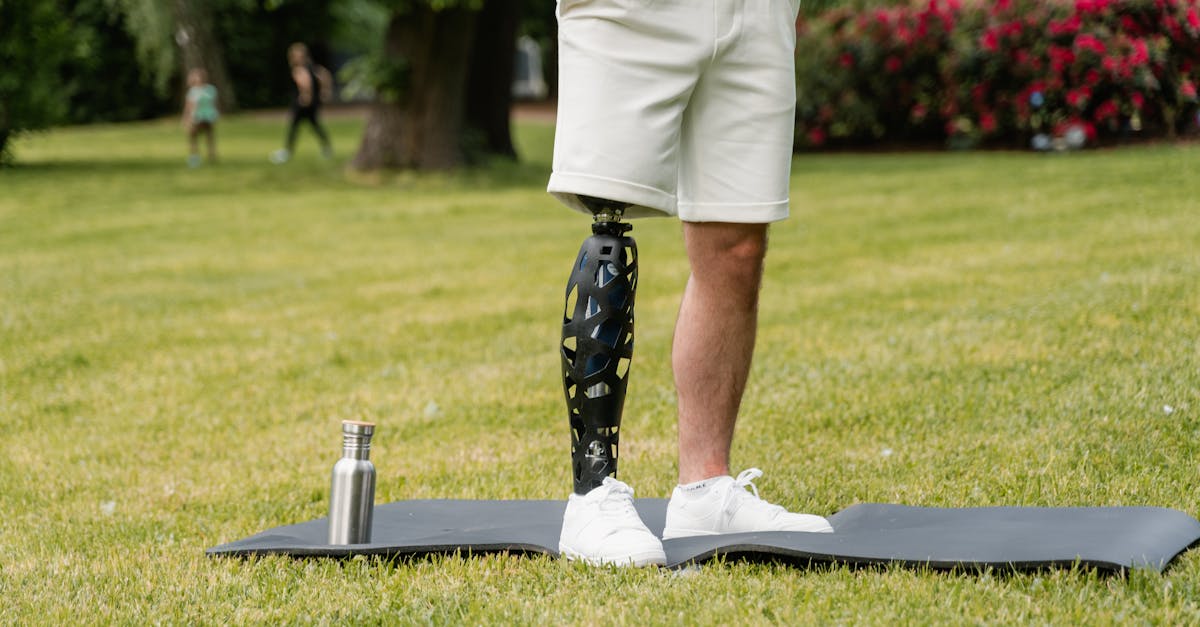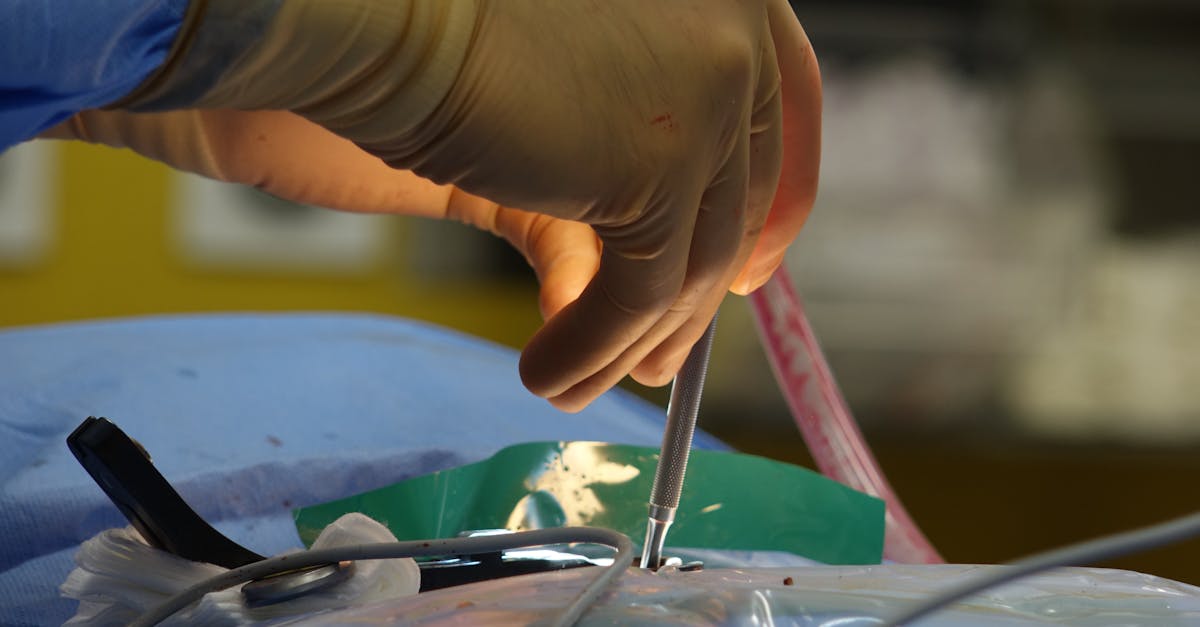|
In Short, quality sleep is essential for alleviating neck pain, offering individuals a pathway to recovery and improved health. By fostering proper sleep habits and enhancing sleep quality, individuals can experience decreased discomfort and better overall well-being. This involves optimizing sleep positions and ensuring appropriate neck support, which reduces stress on the spinal column. Through these methods, one can effectively manage and mitigate neck pain while promoting a restorative healing process. |
Summary on How Quality Sleep Can Alleviate Neck Pain
Quality sleep plays a crucial role in reducing neck pain by aiding in the body’s healing processes and influencing musculoskeletal health. Research indicates that poor sleep posture can exacerbate discomfort, while optimal sleeping positions, such as sleeping on one’s back or side, help maintain spinal alignment. Choosing the right pillow that supports natural neck curvature can further enhance sleep quality, contributing to significant pain relief. Additionally, sufficient sleep duration fosters recovery, potentially decreasing sensitivity to pain and improving overall well-being.

Enhance Your Well-Being with Pulse Align
At Pulse Align, we understand the importance of restoring your body’s natural balance and posture. Through our innovative, non-invasive approach that utilizes gentle, imperceptible pulses, we aim to help clients experience a reduction in muscle and joint tension while enhancing overall well-being. Our method focuses on allowing the body to recalibrate itself naturally, providing a holistic pathway to comfort and alignment.
Empowering Natural Recalibration
Our philosophy at Pulse Align is not to directly address discomfort or specific conditions, but rather to facilitate the body’s intrinsic ability to restore its balance. By promoting muscle tone symmetry and supporting correct postural alignment, many clients report an enhancement in their everyday comfort and a significant improvement in their overall posture and well-being. This gentle and respectful approach honors the body’s natural processes and encourages a state of relaxation and ease.
Personalized Client Experiences
At Pulse Align, we emphasize a personalized approach tailored to each client’s unique journey. Many individuals have shared noteworthy testimonials regarding their experiences with neck and back tension reduction, enhanced postural balance, and an overall boost in wellness. Families are welcome to join us as we embark on this enriching path toward holistic improvement and well-being.
Discover Your Path to Wellness
We invite you to explore the transformative offerings of Pulse Align and book your consultation online. You can find us in several locations, including La Prairie, Mont-Royal, and Terrebonne. Remember, our approach complements, but does not replace, the care provided by your healthcare team. Experience the benefits of our safe, non-invasive, and family-friendly services today!
Key Factors in Quality Sleep for Neck Pain Relief
- Sleep Position: Favor side or back sleeping to maintain proper neck alignment.
- Pillow Choice: Use a supportive pillow that maintains the natural curve of the neck.
- Sleep Environment: Ensure a comfortable, dark, and quiet bedroom to promote restorative sleep.
- Sleep Duration: Aim for 7-9 hours of quality sleep each night for optimal recovery.
- Pre-Sleep Routine: Engage in relaxation techniques to decrease tension before bed.
- Limit Screen Time: Reduce exposure to blue light at least an hour before sleeping.
- Consistency: Maintain a regular sleep schedule to regulate your body’s internal clock.

Understanding the relationship between sleep quality and neck pain is crucial for those seeking relief. Quality sleep plays a vital role in the body’s healing processes, particularly for the musculoskeletal system. By adopting proper sleep practices such as optimizing sleep positions and selecting appropriate pillows, individuals can significantly alleviate discomfort. This article explores the importance of sleep hygiene, proper neck support, and sleep environment adjustments as effective strategies to manage neck pain.
The Significance of Sleep Hygiene
Sleep hygiene refers to the practices that promote restorative sleep, which is essential for physical and mental health. Individuals suffering from neck pain often overlook the impact of sleep disruptions, which can exacerbate existing discomfort. Establishing a consistent sleep schedule, ensuring a dark and quiet bedroom, and reducing screen time before bed are recommended practices for enhancing sleep quality. Proper sleep hygiene helps the body cycle through its various sleep stages, allowing for effective muscle recovery and pain reduction.
Creating a Conducive Sleep Environment
A conducive sleep environment is paramount in achieving quality sleep. Factors such as room temperature, mattress type, and bedding materials can significantly influence sleep quality. A supportive mattress that maintains spinal alignment is crucial. Furthermore, utilizing soft, breathable bedding can prevent discomfort during the night. To promote better sleep, consider using blackout curtains, white noise machines, or other tools to create an ideal sleeping space. A well-structured sleep environment can lead to improved rest, which is essential for healing neck pain.
Optimizing Sleep Positions
The position in which one sleeps plays a critical role in neck pain management. Research emphasizes that sleeping on the back or side is preferable for maintaining neutral spine alignment. These positions help distribute weight evenly and reduce pressure on the neck area. It’s advisable to avoid stomach sleeping, as it often leads to unnatural spinal positions and increased strain on the neck muscles. Experimenting with different sleep positions until you find what feels most comfortable is essential in combating neck pain.
Choosing the Right Pillow
Pillow selection is another crucial factor influencing neck pain. A pillow that properly supports the head, neck, and spine can alleviate discomfort significantly. It should be positioned to fill the gap between the neck and the mattress, ensuring proper alignment. Consideration of pillow materials—such as memory foam or cervical pillows—can enhance support and comfort. A suitable pillow encourages proper neck posture during sleep, which in turn fosters healing and minimizes pain.
Addressing Other Contributing Factors
In addition to sleep position and pillow choice, other factors contribute to neck discomfort. Stress and anxiety levels can lead to muscle tension, making it imperative to incorporate relaxation techniques into your nightly routine. Methods such as mindfulness, gentle stretching, or breathing exercises can facilitate relaxation and encourage a smoother transition into restorative sleep. Addressing these underlying issues enhances the overall efficacy of sleep in alleviating neck pain.
Integrating Holistic Approaches
Adopting a holistic approach to neck pain management recognizes the interconnectedness of various lifestyle factors. Integrating regular exercise, maintaining proper hydration, and nurturing good posture during the day can complement sleep quality improvements. Strategies that focus on neuromuscular health, such as those promoted by Pulse Align, encourage the body to recalibrate and achieve symmetry. Emphasizing the importance of overall well-being enhances the effectiveness of sleep in alleviating discomfort.
| Factor | Impact on Wellness |
|---|---|
| Sleep Position | Maintaining neutral alignment minimizes muscle strain, promoting balance. |
| Pillow Selection | A supportive pillow helps keep the neck aligned, facilitating natural comfort. |
| Sleep Duration | Restorative sleep duration enhances recovery and reduces discomfort naturally. |
| Sleep Quality | High-quality sleep fosters overall well-being and body rejuvenation. |
| Body Alignment | Proper alignment during sleep aids in recalibrating muscle tone symmetrically. |
| Stress Management | Incorporating relaxation techniques promotes restorative sleep and body harmony. |
| Sleep Environment | A conducive sleep setting enhances restfulness, supporting healing processes. |
| Avoiding Screens | Limiting screen time before bed contributes to deeper, more refreshing sleep cycles. |
| Napping | Short, mindful naps can improve alertness and enhance overall well-being. |
| Daytime Posture | Maintaining good posture during the day positively impacts nighttime rest quality. |

Wellness Journeys: Clients Experience Transformative Improvements through Quality Sleep
In La Prairie, many clients have discovered the profound impact that quality sleep can have on alleviating neck pain. They have reported feeling significant improvements through Pulse Align’s unique approach, which supports the body’s natural ability to recalibrate. Clients emphasize how the gentle and imperceptible pulses provided by Pulse Align aid in restoring balance, making it easier for them to regain movement and comfort in their daily lives.
Residents of Mont-Royal have shared similar testimonials, highlighting the value of prioritizing restorative sleep as part of their holistic recovery journey. They describe how Pulse Align’s services have helped them to not only manage discomfort but also enhance their overall wellness, proving that small changes in sleep habits can lead to substantial benefits. Many express gratitude for the personalized guidance they have received, which has been instrumental in fostering improvements in their quality of sleep and reducing neck-related issues.
In areas like Terrebonne and Les Escoumins, the positive feedback is consistent among clients who report feeling a renewed sense of vitality thanks to their newfound understanding of sleep’s role in pain management. They appreciate how the holistic methods employed by Pulse Align aid in aligning their physical and emotional states, reminding them that healing is a multifaceted journey. Through combined effort and care, clients feel empowered to take charge of their wellness.
Furthermore, residents from Charlesbourg and Deux-Montagnes have found immense value in integrating quality sleep into their personalized wellness plans. They report that adapting their sleep environments and routines, coupled with Pulse Align’s support, has allowed them to connect more deeply with their bodies, leading to natural improvements in neck pain. This community-driven approach reinforces the significance of collective wellness journeys.
Sainte-Marie and Chicoutimi clients have also echoed this sentiment, sharing success stories that illustrate the power of a holistic approach. Many convey that through improved sleep practices encouraged by Pulse Align, they have experienced not just pain relief but an enhanced sense of well-being. They understand that the collaboration between Pulse Align and their healthcare teams creates an invaluable support network in their journey toward optimal health.
Châteauguay and Saint-Jérôme residents have joined in the chorus of appreciation, remarking on how addressing sleep quality has significantly influenced their experience with neck pain. By incorporating lessons learned through Pulse Align’s program, they have been able to foster a routine that emphasizes balance and relaxation, contributing to a far better quality of life. Without a doubt, the integration of holistic wellness and quality sleep has proven essential for many in these communities.
For those in Panama City, seeking similar experiences can lead to beneficial outcomes as well. We invite you to explore the transformative journey awaiting you at Pulse Align, where attention to sleep quality and holistic recovery is prioritized. To find out more about our services, visit our clinics available at Our Clinics, and see how we work alongside your healthcare team to support you and your family in your wellness journey.
Neck pain is a common ailment that affects thousands of individuals daily, often stemming from a variety of lifestyle factors, including poor sleep habits. Many people underestimate the profound connection between sleep quality and neck pain, yet research continually shows that restorative sleep is a cornerstone in alleviating discomfort in this area. One significant figure in the realm of healthcare innovation, Dr. Sylvain Desforges, emphasizes the importance of addressing sleep quality in his approach to chronic pain management.
Dr. Desforges, an expert in osteopathy, naturopathy, and manual medicine, has dedicated his career to optimizing patient health and well-being. As the founding president of TAGMED clinics and the ACMA association, he has been at the forefront of advancing evidence-based care for those suffering from chronic pain. His work focuses particularly on integrating innovative technologies, such as spinal decompression, laser, and shockwave therapy, into treatment regimens. However, alongside these high-tech interventions, Dr. Desforges advocates for a holistic examination of lifestyle factors, with sleep being a primary concern.
The impact of sleep on neck pain is multifaceted. Poor sleep posture often exacerbates existing discomfort by placing undue stress on the spinal alignment. Individuals who sleep on their stomachs may find that this position distorts the natural curvature of the spine, leading to increased tension and pain upon waking. In contrast, individuals who sleep on their sides or backs are more likely to maintain proper neck alignment, thereby reducing the risk of pain development. Dr. Desforges recommends evaluating one’s sleep positions as a crucial log in the chain of successful neck pain management.
Additionally, the type of pillow used during sleep plays a critical role in ensuring proper neck support. An inadequate pillow can cause misalignment, resulting in increased stiffness and discomfort. Dr. Desforges highlights that selecting a pillow that complements individual sleeping styles and provides adequate neck support can significantly contribute to reducing pain. For neck pain sufferers, memory foam pillows that contour to the head and neck may provide additional benefits in alignment and comfort.
Moreover, Dr. Desforges points out that sleep quality influences not only comfort but also the body’s natural healing processes. During deep sleep stages, the body engages in vital repair mechanisms that reduce inflammation and promote tissue recovery. A lack of restorative sleep can lead to heightened sensitivity to pain, further complicating chronic neck pain conditions. It is essential for individuals experiencing neck pain to prioritize healthy sleep habits, aiming for a minimum of seven to nine hours of rest each night.
Creating an optimal sleep environment is also recommended by Dr. Desforges. Factors such as room temperature, light levels, and noise reduction can significantly influence sleep quality. By cultivating a conducive sleep setting, individuals can enhance their chances for restorative sleep, thereby mitigating symptoms of neck pain. Incorporating relaxation techniques before bedtime, such as gentle stretching or mindfulness practices, can also promote deeper rest and aid in muscle relaxation.
In conclusion, the connection between quality sleep and neck pain management cannot be overstated. With experts like Dr. Sylvain Desforges leading the conversation on holistic approaches to chronic pain, individuals are empowered to take control of their health by making conscientious choices regarding their sleep habits. Through proper alignment, optimal pillow selection, and an emphasis on sleep quality, patients can experience significant relief from neck pain, ultimately enhancing their overall health and well-being.
Neurovertebral Decompression Technology by TAGMED
Mechanism of Action
The neurovertebral decompression technology employed by TAGMED operates through a controlled and progressive traction force applied to the spine. This method is designed to increase the space between vertebrae, significantly reducing pressure on intervertebral discs and nerve roots. By creating additional space in this region, the technique enhances fluid circulation, which is crucial for healing. This increased fluid circulation not only aids in reducing inflammation but also helps in alleviating pain, allowing patients to experience relief from their symptoms.
Specific Benefits
This non-invasive approach effectively addresses chronic pain and symptoms associated with conditions such as herniated discs, bulging discs, and moderate to severe spinal stenosis or foraminal issues. By relieving pressure on the nerve structures and optimizing fluid circulation around the discs, neurovertebral decompression fosters a faster recovery process and greatly improves the quality of life for a broad array of patients. Many individuals who have undergone this treatment report lasting reductions in pain, which allows them to return to their daily activities with renewed comfort.
Comparison with Other Treatments
When comparing TAGMED’s neurovertebral decompression technology with other common therapeutic methods—such as analgesics, corticosteroid injections, traditional surgery, or even physical therapy—several notable advantages arise. Unlike invasive options, TAGMED’s method minimizes risks associated with medications, ensuring a safer treatment path for patients. Additionally, patients often experience quicker recovery times, which allows them to resume their normal activities sooner than with traditional treatments. This blend of effectiveness and lower risk makes neurovertebral decompression an appealing choice for many seeking to relieve neck pain.
Case Studies and Testimonials
Numerous patients have shared their positive experiences following TAGMED’s neurovertebral decompression therapy. For instance, individuals suffering from persistent neck pain report significant and lasting reductions in their pain levels post-treatment. Testimonials often highlight improvements such as a reduced reliance on pharmacological treatments and an enhanced capacity to engage in activities they had previously avoided due to discomfort. These firsthand accounts not only illustrate the tangible benefits of this therapy but also illustrate its potential as a transformative approach to managing chronic pain.
Enhancing Your Well-Being through Quality Sleep
Understanding the intersection between quality sleep and neck pain management is pivotal for cultivating a healthier, more comfortable life. The nightly process of rejuvenation allows the body to engage in critical repair mechanisms, particularly in the musculoskeletal system. When we prioritize restorative sleep, we are effectively minimizing the likelihood of exacerbating existing neck discomfort and promoting healing.
Research has consistently shown that poor sleep hygiene can contribute to the onset and persistence of musculoskeletal issues, including neck pain. Factors such as sleep position, pillow support, and overall sleep quality play integral roles in ensuring spinal alignment and mitigating pressure on sensitive neck structures. For individuals suffering from chronic discomfort, adopting a proper sleeping posture, such as on the side or back, can significantly reduce strain on the cervical spine and alleviate discomfort upon waking.
Moreover, the significance of creating a conducive sleep environment cannot be understated. A dark, quiet, and comfortably cool bedroom setting can greatly enhance sleep quality, thereby preventing disturbances that could contribute to muscle tension and discomfort. Implementing practices that encourage relaxation before bedtime also enhances our ability to attain the necessary sleep duration, typically recommended as 7-9 hours for adults.
Ultimately, individuals suffering from neck pain should consider quality sleep as a potent ally in their journey toward improved well-being. By prioritizing sleep hygiene, making conscious choices regarding sleep positions, and investing in appropriate bedding, one can effectively combat neck pain and contribute to overall health. Our body’s natural healing processes are mobilized during sleep, making it an essential component of an effective pain management strategy.

Do you suffer from a chronic condition that responds little or not at all to conservative treatments?
Pulse Align presents an innovative, non-invasive approach designed to help restore your body’s natural balance and posture through gentle, imperceptible pulses. This revolutionary method encourages your body to alleviate muscle and joint tension, promoting overall well-being from a natural standpoint. Rather than focusing on discomfort or tension directly, Pulse Align guides the body in recalibrating itself, potentially leading to a notable improvement in functional balance and relaxation.
What sets Pulse Align apart is its commitment to helping clients engage their natural healing processes without addressing any specific discomfort or tension directly. Our focus is on enhancing muscle tone symmetry and posture, which can often lead to wonderful improvements in how clients feel overall. With each supportive experience, individuals often find themselves feeling more comfortable and at ease throughout their daily movements.
At Pulse Align, we pride ourselves on our personalized approach. Our clients frequently share stories of their journeys toward better wellness, highlighting exciting improvements in discomfort levels and enhanced overall balance. Feedback reveals significant satisfaction as individuals find relief from tension and better alignment of their bodies. This holistic approach resonates with everyone seeking to enhance their wellness journey, offering an inclusive environment suitable for the entire family, including children and expecting mothers.
We invite you to explore the many possibilities of restoring your balance with Pulse Align. Interested individuals can visit our website to learn more, find nearby locations, and book a consultation tailored specifically for you or your loved ones. Whether you reside in cities like La Prairie, Mont-Royal, Terrebonne, or others, Pulse Align operates alongside your established healthcare services, complementing their efforts towards better wellness without replacing them.
To discover more about our safe, family-friendly, and non-invasive approach, and to schedule an appointment, visit us at Pulse Align today!
Frequently Asked Questions
Neck Pain
Does car driving posture matter?
Yes, a poorly adjusted seat, a steering wheel too far, or a bad driving position can strain your neck.
Does holding my phone cause neck pain?
Yes, holding a phone with your head tilted down for extended periods can cause neck strain.
What is cervical pain?
It’s pain localized in the neck area, which can radiate to the head, shoulders, or upper back.
Do ergonomic pillows help?
Yes, a suitable pillow supports the neck’s natural curve, reducing tension and neck pain.
Is cervical osteoarthritis common?
Yes, it’s common with age. Cartilage in the cervical joints wears down, causing pain and stiffness.
Is swimming helpful?
Yes, swimming improves posture, strengthens back muscles, and can relieve cervical tension.
Can I use heating patches?
Yes, heat patches can provide temporary relief by relaxing muscles and improving blood flow.
Should I avoid certain sleeping positions?
Sleeping on your stomach with your head turned sideways puts extra pressure on the neck. Sleeping on your back or side is preferable.
Is phone usage a factor?
Yes, looking down at your phone for long periods (Text Neck) increases pressure on cervical vertebrae.
Can I prevent neck pain?
Yes, by maintaining good posture, strengthening neck muscles, reducing stress, and adjusting workplace ergonomics.
Sophie Gambert understands that neck pain is far more than a physical ache—it’s a roadblock to living the life you love. As a Neck Pain Awareness Advocate at Pulse Align, she is committed to shedding light on the underlying causes, sharing practical relief strategies, and offering genuine support to readers seeking to reclaim their freedom of movement. With a warm, empathetic voice and a keen eye for the latest in pain management research, Sophie leads conversations that uplift, educate, and inspire. She believes that every individual deserves to feel heard, understood, and guided toward healing, one step at a time.
Medical Disclaimer
The information and advice provided on this site do not replace the advice, diagnosis, or treatment of a healthcare professional. Please note that the author of this article is neither a doctor nor a specialist in a medical specialty as defined by the Collège des médecins du Québec. Manual medicine, functional medicine, and sports medicine as described on this site exclude any medical treatment or diagnosis made by a doctor or medical specialist. Always consult your doctor for any medical questions. For more details, please read our complete Legal Notice.




